An artichoke salad is a simple antipasto, perfect for the summer and best to prepare sous-vide for maximum flavor and tender artichokes with some bite to them as well. Most of the work goes into cleaning them, but fresh artichokes are so much better than from a jar or can. As is usual with antipasti, you just need some good olive oil and a bit of parsley to turn some artichokes into a great antipasto.
Ingredients
artichokes
good extra virgin olive oil
salt
lemon
fresh flatleaf parsley
Preparation
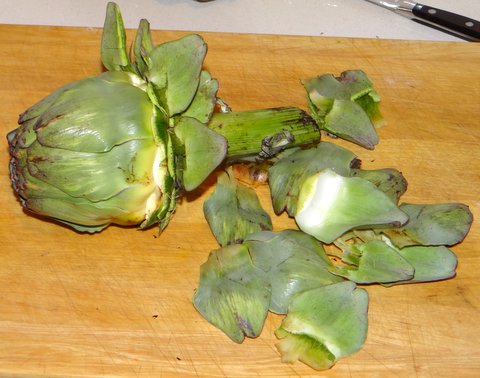
This cleaning method is for large tough artichokes. For small tender ones, you can eat more of them.
Start by tearing off the tough outer leaves.
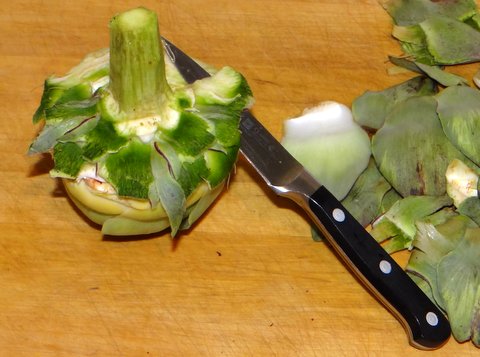
With a pairing knife, trim off all the green from the bottom. You can also eat the stems if they are not too tough, but you do need to peel them thickly.
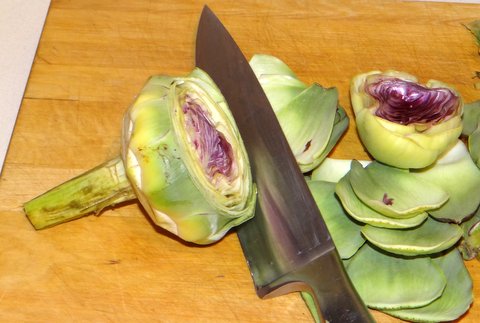
Cut off the top of the artichoke, leaving only about 2-3 cm (1″) from the bottom.
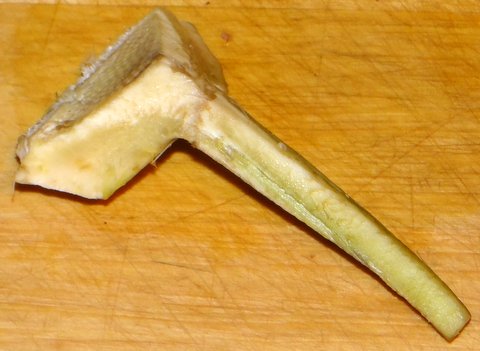
It is now easy to cut out all the ‘hay’, and all the other tough green bits. You won’t have much left, but that’s how it is with artichokes.
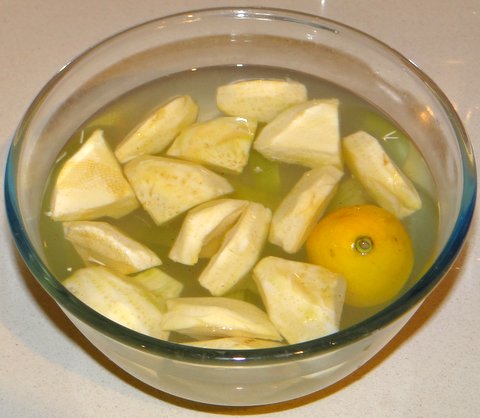
Put the artichoke quarters in a bowl of water with half a lemon, that you squeezed into the water before adding the lemon itself as well. The vitamin C from the lemon prevents the artichokes from turning brown and can even change the color back to white if they do turn brown a little.
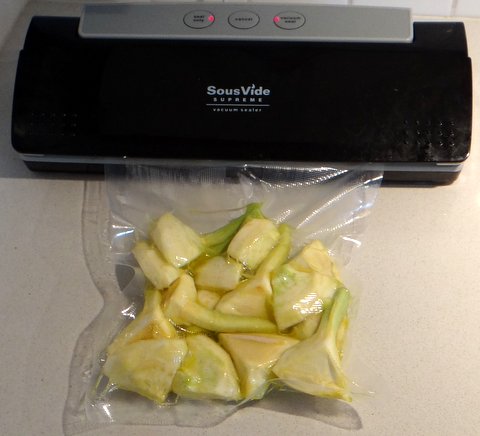
Preheat the water bath to 84C/183F. Dry the artichokes with paper towels and vacuum seal them with some good extra virgin olive oil and a bit of salt.
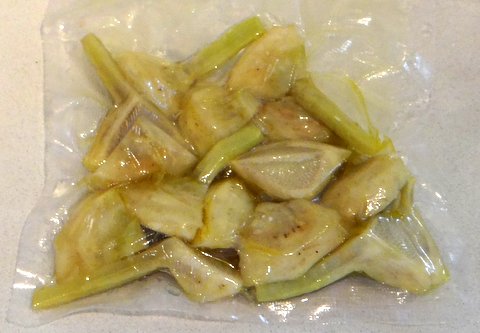
Cook sous-vide 1 hour at 84C/183F.
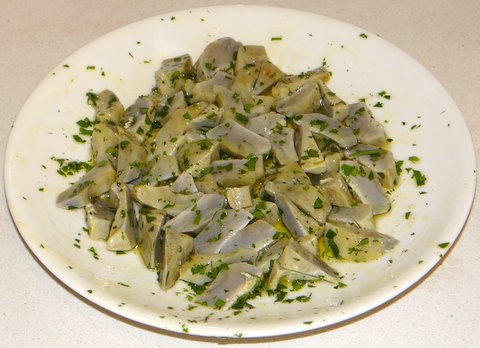
Slice up the artichokes and toss with good extra virgin olive oil, chopped flatleaf parsley, salt, and just a bit of freshly squeezed lemon juice. If the stems are still tough, just discard them.
This is nice as part of a larger selection of antipasti.

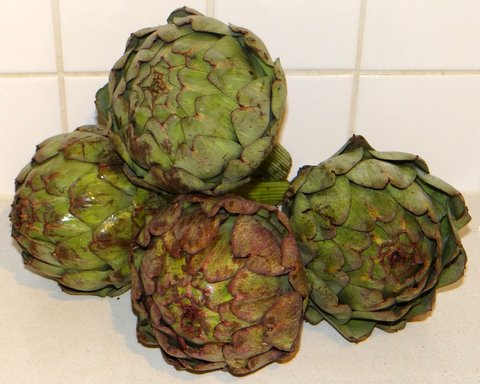
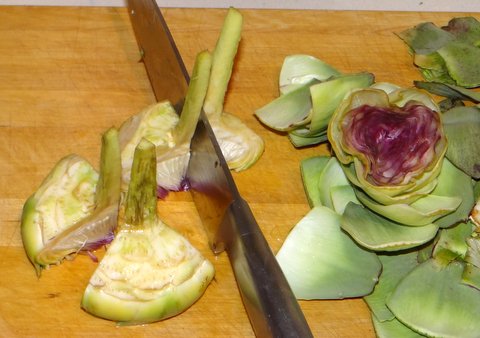

I must try this recipe. It seems wrong that it should take as long to sous vide a soft boiled egg, but sous vide isn’t very logical, is it?
LikeLike
Sous-vide is logical, but the logicmis different from what we are used to. Here is some logic for you: fish or beef tenderloin can be eaten raw (and so can an egg if it has no salmonella), so it only takes the time to bring it to a uniform temperature to cook it sous-vide (time depending on thickness and shape, following the laws of thermal diffusion). You can’t eat chuck roast or artichokes raw, because they are too tough. At sous-vide we cook at a temperature just high enough to break down the stuff that makes it tough (cellulosis for the artichokes, connective tissue for the meat). At this temperature we keep maximum flavor, but it takes longer because we are cooking at the lowest temperature needed to make it tender, and chemical as well as physical processes go slower at a lower temperature.
LikeLike
Don’t worry, I’m starting to get it. I’m just a slow learner where numbers are involved (such as temperature and time). With “normal” cooking I have an instinct for when things are done, and I’m not sure that will ever be the case with sous vide. But I’m trying!
LikeLike
This will be our first sous-vide vegetable…can’t wait to try it…
LikeLike
Artichokes, asparagus and carrots are my favorite sous-vide vegetables. Would love to hear how it turns out for you!
LikeLike
Have you tried white asparagus sous vide? I did it the other day with a truffle cream and it was other worldly.
LikeLike
Definitely have! See https://stefangourmet.com/2012/01/14/turbot-and-white-asparagus-sous-vide-with-hollandaise-sauce/
LikeLike
Nice! We did it with a serrano ham wrapped monkfish. I love the Montrachet wines but my personal preference is the Puligny Montrachet. Just me. We will have to try the artichoke sous vide. It’s Baby Lady’s favorite food. She did a stuffed one a while back that was excellent. It’s on the blog if you’re interested.
LikeLike
I also prefer Puligny Montrachet, since it is more on the mineral side (as opposed to the buttery side for Chassagne). Because of the buttery Hollandaise I decided that Chassagne would work better for this dish, but I have not tried them side by side.
Monkfish is also great sous-vide! I use parma because it is less salty than serrano, but both are great.
I’ll have to check out your blog!
LikeLike
I am starting to get jealous of your little sous vide machine…
LikeLike